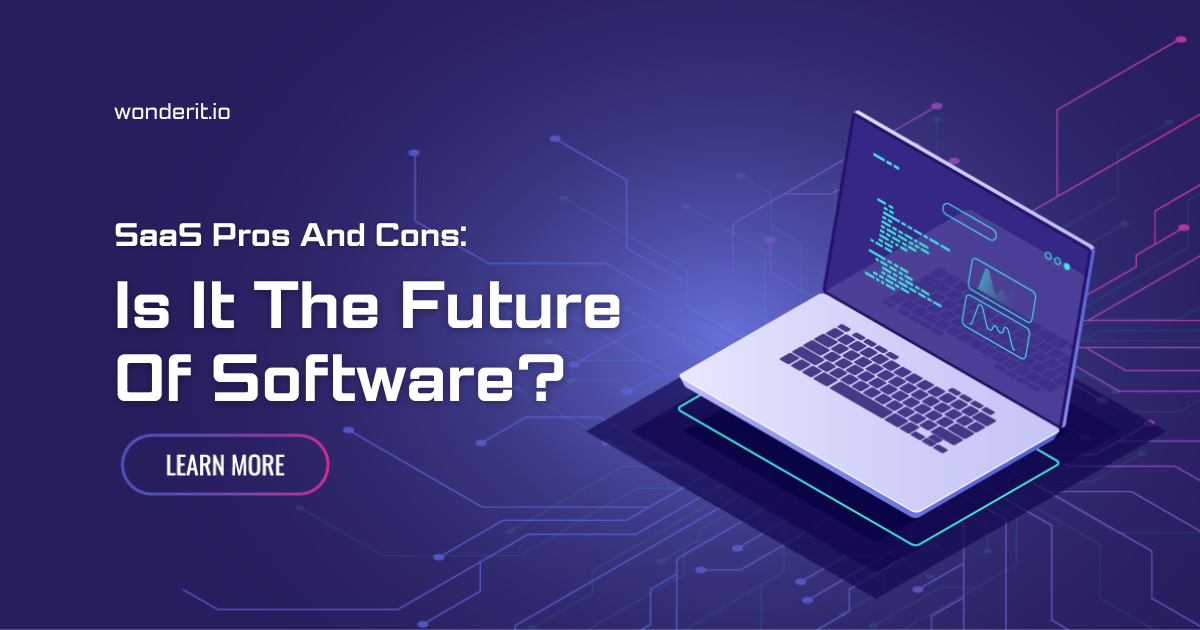What Is SaaS?
Software-as-a-service is a form of cloud computing that provides end users with cloud apps and all associated IT platforms and infrastructure through a web browser. It might be the ideal resolution for large companies, small firms, or individuals that:
- Don’t want to be responsible for purchasing or managing platforms, on-premises software, or infrastructure.
- prefers operational expenditure (OPEX) over capital expense investments for less difficult cost management (CAPEX).
- Be in favor of software subscription arrangements.
- have issues that can be solved with little adjustment.
How Does Saas Work?
By eliminating the need to buy software outright or make investments in a substantial on-premise IT infrastructure, as is the case with traditional software, SaaS lowers consumers’ upfront expenditures. SaaS customers should, however, invest in quick network infrastructure because internet connection speeds impact service performance. SaaS includes business services that offer integrated development environments, e-commerce platforms, and tools for customer relationship management. Examples of ASPs include Google Docs and Microsoft Office 365. (IDEs).
What Is The History Of SaaS?
John McCarthy, a well-known computer scientist who won the Turing prize for his work in artificial intelligence (AI), famously declared, “Computation may someday be structured as a public utility,” in a 1961 address to MIT students. In other words, the idea of cloud computing was first conceived as a shared computer resource.
Although the concept is not new, the web-based technology needed to support SaaS reached maturity in the late 1990s. At that point, businesses like Salesforce, which was established explicitly to provide cloud software, started providing established enterprise products like customer relationship management (CRM) via a SaaS model.
What Does As A Service Mean?
Think about the distinctions between paying for valet parking and parking space rental. Despite offering the same advantage to the customer—a location to store their car—parking spots are products, whereas valet parking is a service.
Software was once sold to customers as a product by software companies. The SaaS model, on the other hand, actively provides and maintains the software for its users via the cloud. They execute the application on their servers and host and maintain the code and databases required for it to function. SaaS is therefore more akin to a service than a product.
What are the advantages and disadvantages of using SaaS?
The Software as a service model offers both advantages and disadvantages, but for contemporary enterprises and customers, the advantages frequently outweigh the disadvantages. The following are some benefits and drawbacks of using SaaS applications:
Advantages:
1. Access from anywhere, on any device.
SaaS solutions typically allow users to log in from any place and device. This provides a tremendous deal of freedom because companies may let workers work anywhere in the world and users can access their data from anywhere. The majority of users also have several devices and frequently switch out their devices, so they don’t need to reinstall SaaS programs or buy new licenses every time they move to a different one.
2. Cost savings.
Software as a service reduces overhead and costs associated with internal IT. The sole expense to a firm is the application’s subscription fee; the SaaS provider manages the servers and infrastructure that support it.
3. Scalability.
The SaaS provider takes care of scaling up the program, including expanding the database or adding more processing capacity as demand rises.
Disadvantages:
1. The need for stronger access control.
SaaS apps are becoming more widely available, which also makes it crucial to confirm user identity and manage access levels. Organizational assets are no longer housed in a closed network, isolated from the outside world, thanks to SaaS. Instead, user access is determined by user identity: if a person has the correct login information, access is permitted. Thus, reliable identification verification becomes essential.
2. Security and compliance.
Software-as-a-service apps shift the burden of protecting them and the data they contain from corporate IT staff to external SaaS providers. This has less of an impact on small and medium-sized organizations because major cloud providers often have greater resources for implementing robust security. But if a big corporation has to adhere to stringent security or regulatory regulations, this could be difficult. Businesses may occasionally be unable to evaluate the security of their apps themselves, such as through penetration testing. In essence, they must accept the application’s security as being guaranteed by the external SaaS provider.
3. Vendor Lock-in.
A company could depend too much on the Software as a service application provider. If an organization’s whole database is housed within the old program, switching to a new one is time-consuming and expensive.
What is the cloud?
The term “the cloud” describes remote web servers in different data centers that run application code and host databases. Cloud service providers use the Internet to deliver their services to clients or end users.
What are the three primary models for cloud services?
One of the three main cloud service models is SaaS. The several types of services that cloud providers—companies that own and run computers in different data centers—offer to customers and clients are referred to as cloud service models.
The three cloud service models are:
- IaaS (Infrastructure-As-A-Service)- A cloud provider oversees the servers, databases, and other components of the cloud computing architecture. Instead of managing the backends of their apps themselves, businesses can create their own applications on IaaS.
- PaaS (Platform-As-A-Service)- PaaS is a level above IaaS and offers infrastructure, tools, and other assistance for creating apps.
- SaaS (Software-As-A-Service)- Complete cloud apps.
Bottom Line
Software as a Service is a cloud-based delivery model for software applications, offering benefits such as lower costs, increased accessibility and scalability, and reduced IT maintenance. If you are interested in building a SaaS product, do not hesitate to contact our team at WonderIt.


Recent Comments